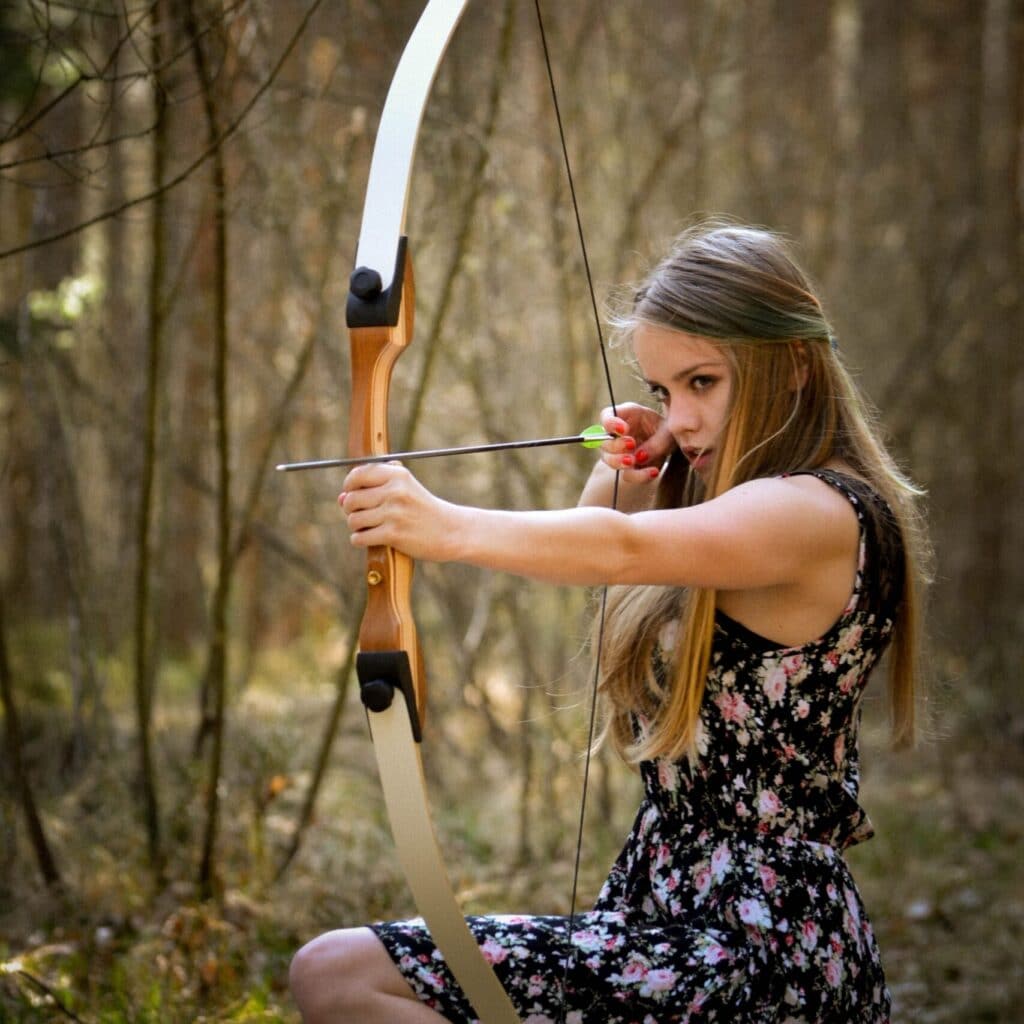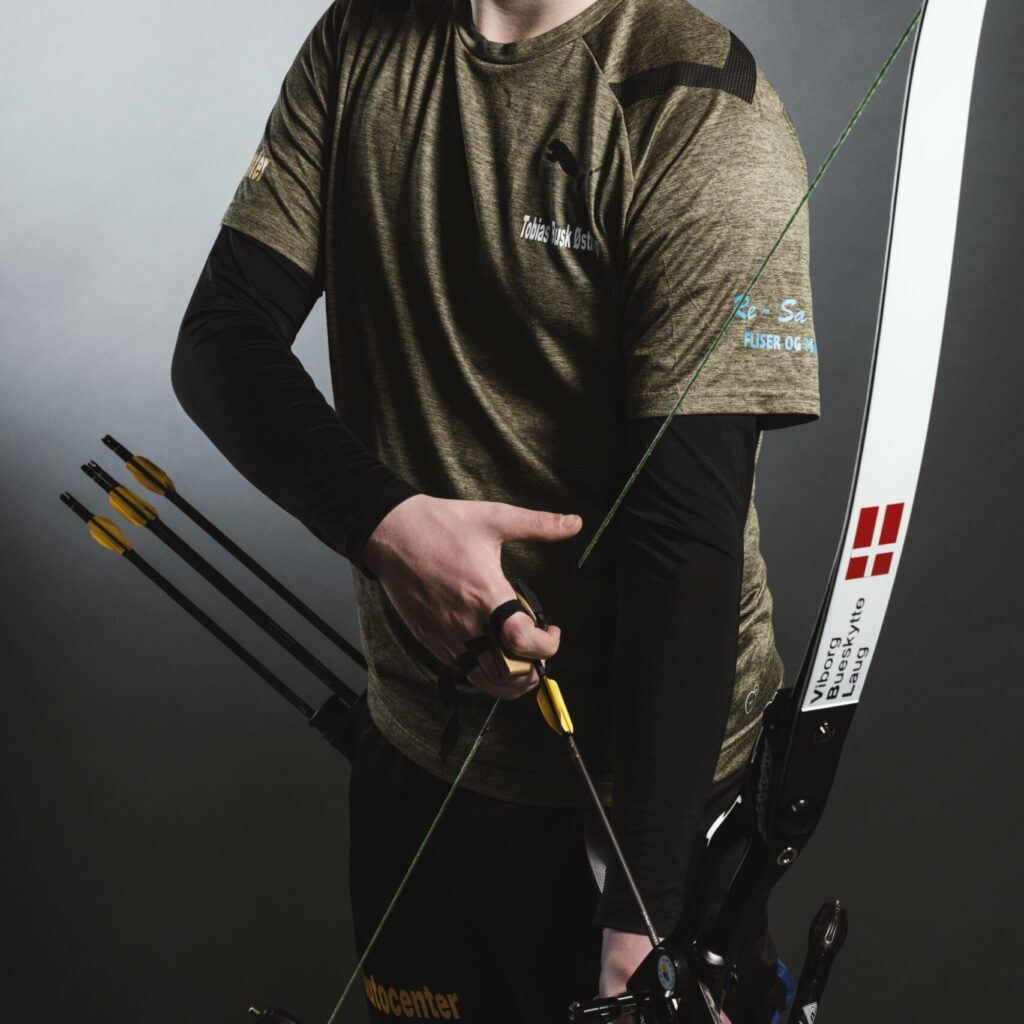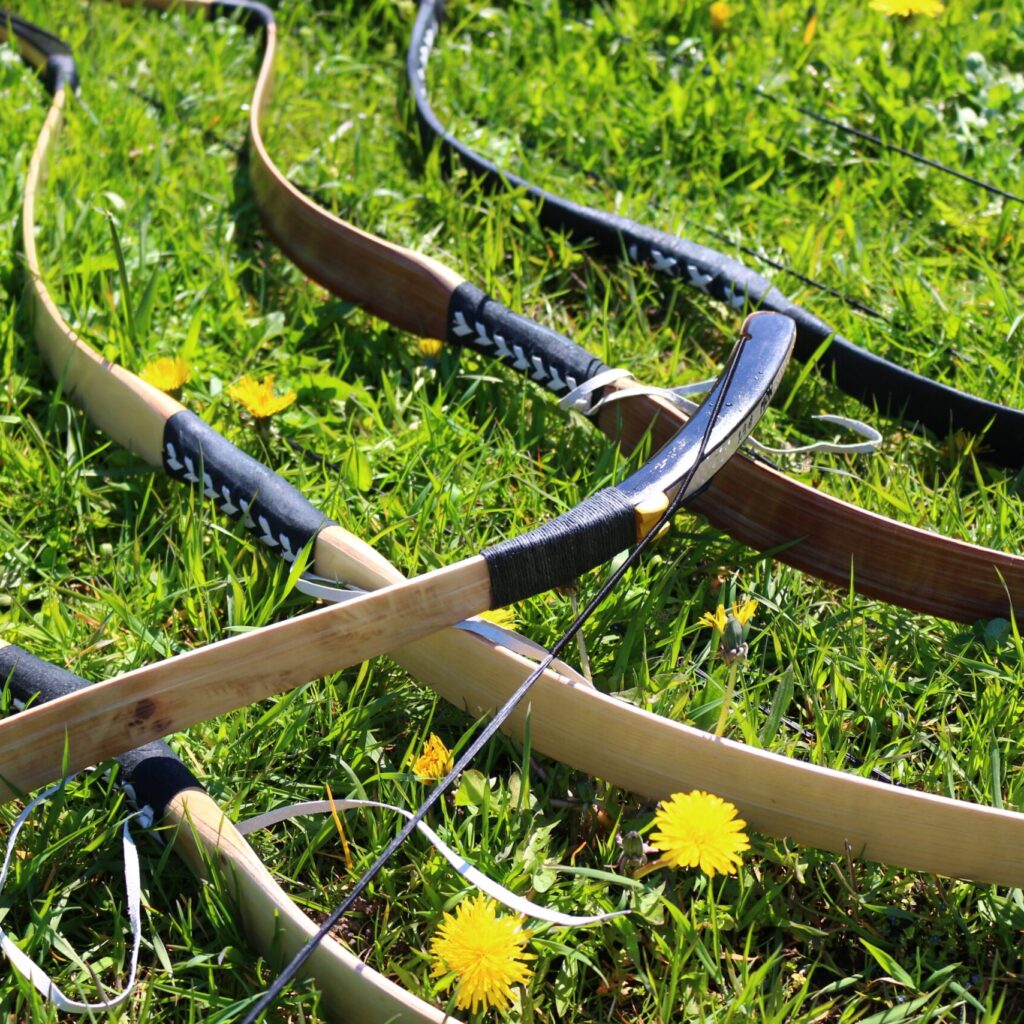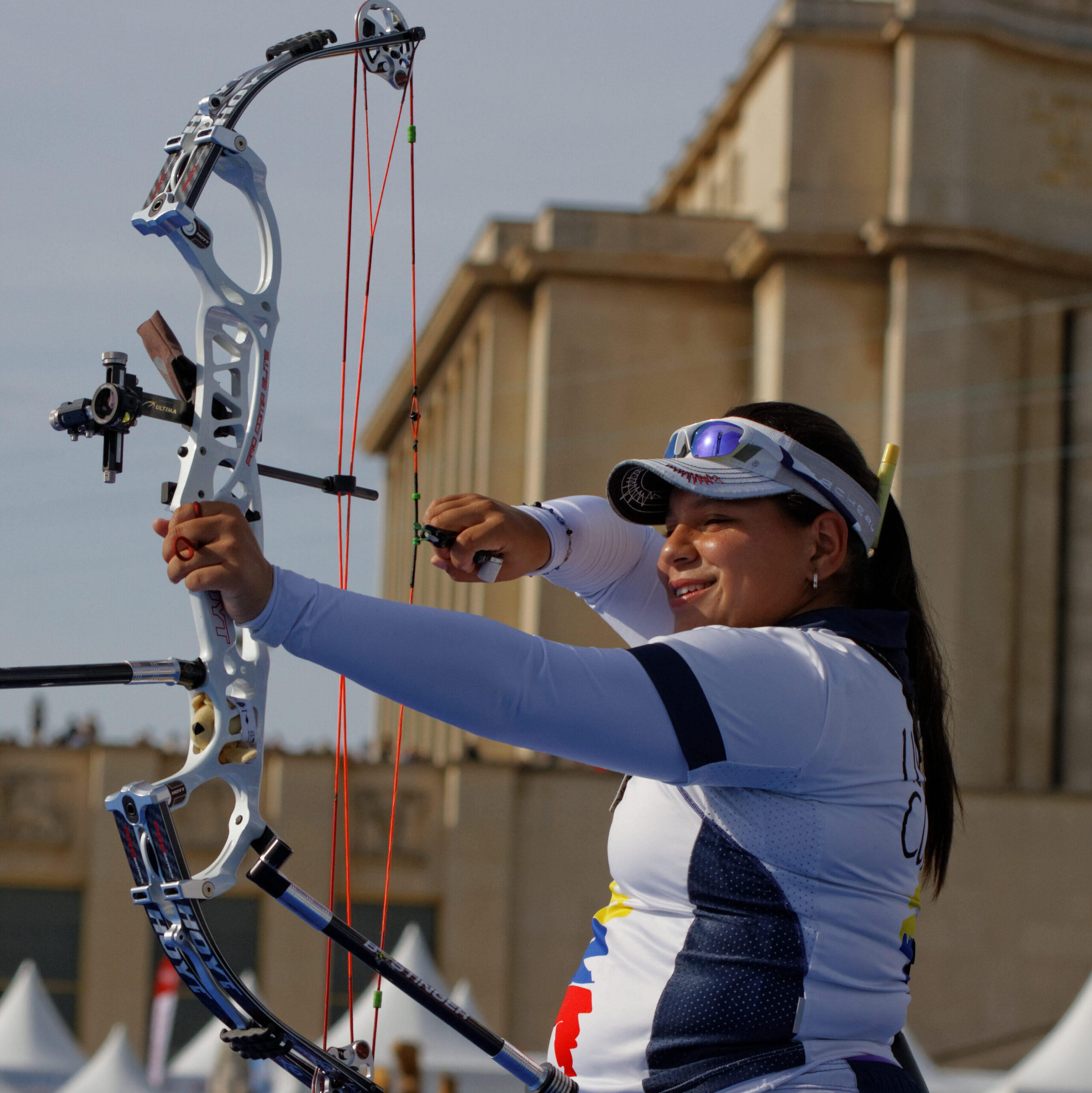Archery is a great sport for children and teens. It keeps them active and outside and teaches them an important life skill. In my experience, kids that practiced archery tend to be more patient and concentrated, as you need these traits for archery. Still on the fence about whether archery is the right sport/hobby for your child? Make sure to read this article for a deep dive into this topic.
If you want to get your child/teen started with archery, you will need to buy the gear. If you are not into archery, you might be overwhelmed by the options. If you type in youth bow, you will find thousands of options, ranging from cheap toys to high-quality bows. Even for veteran archers, this is a difficult choice. So, what should you choose?
To make this easier, I have listed down the 5 best beginner youth bows. These recommendations are based on my experience at my local archery club. We have a lot of youngsters that shoot a bow for the first time at our club, so I have learned a thing or two.
1. Best beginner bow for older children and teens
If anyone asks me to recommend a beginner’s bow for a young archer, I generally recommend the Samick Sage. This is not necessarily purely a youth bow; a lot of adults use this bow too. This is a big benefit as they will never grow out of this bow. Still, the bow has a relatively small footprint, so bigger children will be able to wield the bow just fine.
It is quite frustrating for an older child or teen if they must shoot with a device that is basically a toy. Getting your child, a serious bow will boost their morale and motivates them to act responsibly. Why would you act responsible with a bow that looks and feels like a toy?
The Samick sage is what I consider a beginner’s bow. A beginner’s bow is a simple and sturdy bow, which is easy to shoot and allows you to experiment with different shooting styles. For example, shooting with or without a sight.
It is the best in its class. The Samick Sage has been known to be a high-quality bow for years. Don’t just take my word for it. If you Google ‘’Samick Sage reviews’’ you will find nothing but positive reviews!
Make sure to choose the lowest draw weight (25 LBS) for this bow!
2. Best beginner bow for young children
The bow I recommend above is great for older children (12+) but for young children, it will be too big. Also, you might not want to invest that much money in a bow for younger children.
As a parent, you know that small children tend to be quite unsteadfast. Today they might like archery, but tomorrow they might like soccer as one of his schoolmates now plays soccer. Still, you want to give your child the opportunity to explore this interesting sport.
If this is the case the Youth bow from Keshes is a perfect option for your child. It includes everything your child needs to experience archery, such as a bow, arrows, protection, quiver, and a target. It even includes a removable sight, making it easier for your child to aim the bow.
3. Best compound bow for teens
Generally, I do not recommend a beginner’s bow (like the first bow in this list) over a compound bow. These bows are more complicated and require more technical knowledge. Getting started with a compound bow is also more difficult, shooting a compound bow will feel rather unnatural the first time you shoot.
But as a compound archer, myself I do not want to discourage any children from buying a compound bow. It is a lot of fun once you have everything set up correctly!
If you want a compound bow for a teen or older child (about 12+) I recommend the Sanlida Archery Dragon package. For an affordable price, your child will have endless fun with this high-quality bow.
Since the bow is highly configurable in both draw weight and draw length, it can accommodate small and large archers. Even large and strong adults can shoot this bow! I do not recommend it to younger children though (10 years or younger) as the bow will be too heavy and bulky for them.
4. Best compound bow for children
If you a younger child wants to start shooting with a compound bow, this is a great option. It will fit children 6 till 16-year-old. The lighter and smaller frame will make it easier for the child to shoot the bow. The integrated finger protection is also easier for children.
This set includes all the gear your child needs to get started, such as the bow, arrows, sight, arrow rest, target, and quiver. It’s also quite special that it includes, an arrow puller, string wax, and a multi-tool. Those are rarely added in these package deals.
So if you need a solid youth compound bow for a younger child, this is a solid choice!
5. Best traditional bow
Traditional bows are different from modern bows as they more closely resemble the bows from ancient history. If your child loves historical archers such as robin hood, he/she will love this bow.
It is important to note though, that shooting a traditional bow is generally a bit more difficult than a beginner’s bow. Still, I have seen many young archers even master the most difficult of bows, so with some perseverance, everything is possible.
This bow is a great option for your little traditional archer, as it has a bow length of only 34 inches, which fits 4 – 12-year-olds. This looks like a miniaturized adult bow. Because it’s exactly that, it is a smaller version of the beloved full-size Deerseeker, which many traditional archers use.
If you want this bow in a bigger size for a teen I recommend the full-size model instead which you can find here.
How to choose a bow for a child
Children need a bow that is easy to shoot and requires little maintenance. It’s essential that children can focus on their technique without having to worry about how the bow is configured. Therefore, you should buy a simple bow that is easy to understand.
The kind of bow fits a child best
It is recommended that children start with a beginner’s bow. This is a simplified bow that is easy to shoot and requires less maintenance. Recurve and compound bows are more complicated and finicky. Traditional bows, on the other hand, are more difficult to master.
If you are new to the world of archery, you are probably not familiar with these terms. Therefore, I will explain them in a bit more detail, so you can identify the different bows:
- Recurve: the term recurve bow is quite confusing as it is used by archers in different ways. Technically all bows with bent tips are considered recurve bows. But often it is used to abbreviate the class Olympic recurve or Freestyle recurve class. These bows are very advanced as they have a sight, stabilizer, adjustable limb pockets, and clicker. You also see this type of bow at the Olympics.
- Compound: a compound bow is also a very advanced bow, but the biggest difference is that these bows have a let-off. This system reduces the hold weight of the bow, which makes it easier to keep the bow at full draw. This is done by the wheels (cams) you see on the upper and lower limb.
- Traditional: this type of bow is what you often see in historical movies. Think for example of a longbow, flatbow, horse bow, etc. All these bows are considered traditional bows. These bows are much simpler, but also less forgiving. You need to master the bow to shoot well!
- Beginners bow: this type of bow fits neatly between a recurve and a traditional bow. The major benefit of this bow is that it is simple, forgiving, and needs almost no tuning at all. Tuning a bow is quite a complicated process and can be very overwhelming when you are just getting started.




Although your child can start with any bow, he/she likes it’s often better to start with a beginner’s bow. Archery instructors use these types of bows because they are much more beginner friendly.
Selecting the right draw weight for a child
When you are buying a bow for your child, you sometimes must choose a draw weight. The manufacturer often has recommendations on what draw weight to get depending on your child’s age. If no such information is available, you can use the table below. The table shows you what draw weight is ideal, depending on the age of the child.
| Archer’s profile | Draw weight |
| 8 years old or younger | 10 LBS |
| 9 till 15 years old | 15 LBS |
| 16+ years old | 20-25 LBS |
Additional note: you might think that it’s strange that a 16-year-old should only have twice the draw weight of an 8-year-old. This can be explained by the difference by the limb and actual draw weight. Since the 8-year-old has a lot shorter draw length, the actual draw weight of this child will be a lot lower than the table suggests. I explain this in more detail in this article.
Next steps: learning archery
Once your child has their bow, they can start practicing. Although archery might seem quite intuitive there is a lot of technique involved. So, if you let your child shoot without any instructions, they might learn some bad habits which can decrease their accuracy. More importantly, it can also lead to some minor physical issues, such as strained muscles or a sore back.
You can get completely lost in all the guides that explain how to shoot a bow. But your child does not have to get everything right. But it helps to get the basics right from the get-go. If you want a quick and easy guide (with lots of pictures and videos), read the article I wrote below:
Safety
Since children cannot always oversee the consequences of their actions, you need to take some additional safety precautions. This does, of course, depend on the age of your child and their overall behavior. I have covered how to keep archery safe in more detail in the article below:
Getting your child started with archery – safety
Final words
If you have any questions, concerns, or remarks, please leave them in the comment section down below. I will answer your question as soon as possible and send you an email once I reply.
Tim van Rooijen
For as long as I can remember, I have always been fascinated by archery. First due to its historic significance but later because I like being outdoors. With this blog, I share my knowledge about Archery and how you can improve your shot. More about author…







